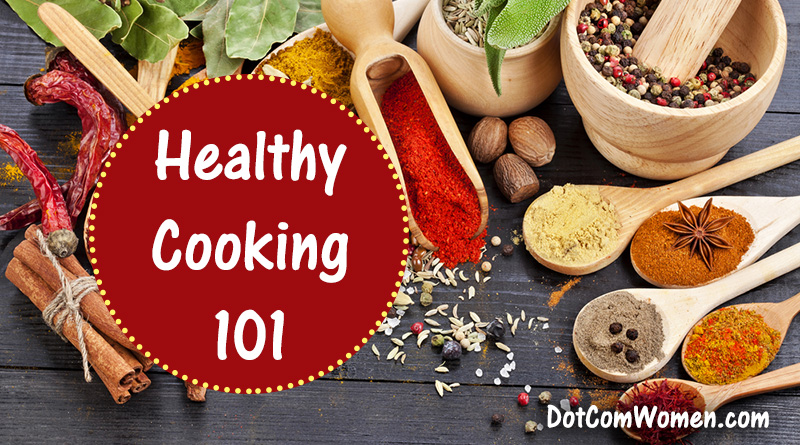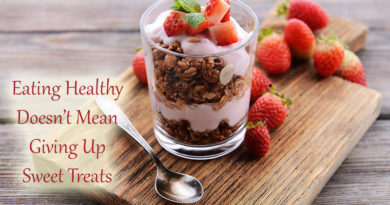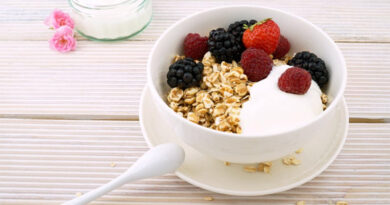Healthy Cooking 101
Adequate nutrition is essential to your health. Whether you want to shed pounds, get fit, or prevent diseases, there are plenty of ways to get more nutrients in your diet. It’s no need to give up your favorite foods or eat bland meals to reach your goals. The key is to make smart food choices and cook the right way. Simple changes, such as cutting back on sodium, swapping white flour for coconut flour, and using low-fat dairy, can make all the difference.

Healthy cooking can improve your life on every level. Once you start to eat clean, you’ll lose stubborn fat and have more energy. A well-balanced diet that provides lean protein, slow digesting carbs, essential fats, and fiber, can ward off diseases and make it easier to maintain your weight. It’s never too late to change your eating habits and cook healthier meals. Here are some tips to help you out:
Make Smart Food Choices
Focus more on food quality and less on calories. Clean up your diet by ditching the sugar, high-fructose corn syrup, white flour, margarine, refined oils, additives, and heavily processed ingredients. Choose local and seasonal produce as often as you can.
Stick to lean beef, poultry, salmon, tuna, mackerel, seafood, leafy greens, and sweet potatoes. Fruit and whole grains are a good choice for breakfast. Give up soda and caffeinated beverages because they contain nothing but empty calories. Replace them with water, unsweetened herbal tea, ice tea, and green smoothies. Stay away from vending machines and junk food.
Plan Your Meals
Take the time to plan your meals. Create a menu for the week ahead. This way, you can cook your food over the weekend and make healthier choices. Meal planning will save you time and money. Simply write down what you would like to eat, look for recipes, and then make a grocery list. Grill, steam, or roast the meat and fish, freeze your vegetables, and cook large batches of rice, legumes, or stew.
Treat Your Vegetables Right
Most vegetables lose their nutritional value during cooking. The high temperature depletes them of vitamins, minerals, and antioxidants. If you don’t like your vegetables raw, steam them. This cooking method preserves their nutritional content and makes them easier to digest. It’s quick, easy, and convenient.
Cut Back on Fat
Dairy foods, meat, cream, and sauces are loaded with saturated fat, leading to a higher risk of heart disease, elevated cholesterol, and weight gain. To prevent these problems, switch to low fat versions. Replace whole milk with skimmed milk, use Greek yogurt instead of mayonnaise, and cook with olive oil or coconut oil.
Be aware that not all fats are created equal. Sardines, salmon, avocado, unrefined vegetable oils, and nuts contain monounsaturated fats that keep your heart healthy and lower bad cholesterol. These fatty acids also reduce inflammation and fight free radical damage. Trans fats, which can be found in processed foods, are the most dangerous to your health.
Limit Sodium
Your body needs sodium to function at its peak and maintain its electrolyte levels stable. The problem is that most people consume too much sodium, which puts them at risk for high blood pressure and heart disease. A diet that’s high in salt may increase inflammation and cause fluid retention in your body.
To cut back on sodium, flavor your meals with herbs and spices. Use turmeric, ginger, coriander, rosemary, mustard seeds, black pepper, chili, and garlic. These spices boast powerful antioxidant and antibacterial properties, increase metabolism, and support overall health. Some can even help you slim down and burn more calories throughout the day.
Make Healthy Food Swaps
Get creative in the kitchen and cook your favorite meals using healthier ingredients. If you live in or close to major markets such as Seattle or San Diego, you can take healthy cooking classes such as Salad Arts or Basics of Healthy Cooking with Cozymeal, a cooking classes marketplace, to get more creative ideas.
If you have a sweet tooth, use stevia instead of sugar. This natural sweetener adds flavor to homemade desserts, smoothies, tea, and pudding. You can also swap sugar for cinnamon, fruit juice, applesauce, or vanilla essence.
Replace white flour with konjac flour, almond flour, coconut flour, or whole wheat flour. Konjac flour has zero carbs, which makes it ideal for dieters. Add raw cocoa or dark chocolate to homemade sweets. Serve your meals with wholegrain bread instead of white bread and bagels. Cottage cheese will add volume and consistency to homemade cookies and cakes. Start your day with whole grains instead of breakfast cereals. Whole grains, such as oats and wheat bran, are packed with fiber and complex carbs that provide lasting energy. Breakfast cereals have little fiber and a lot of sugar.
Prepare Your Own Snacks
Make your own snacks to save calories and eat healthier. Homemade trail mixes and granola bars are more nutritious than those found in stores. If you’re hungry between meals, eat high-protein foods like cottage cheese, boiled eggs, almonds, or cashews. Protein suppresses your appetite and boosts metabolism, which helps maintain a healthy body weight.



